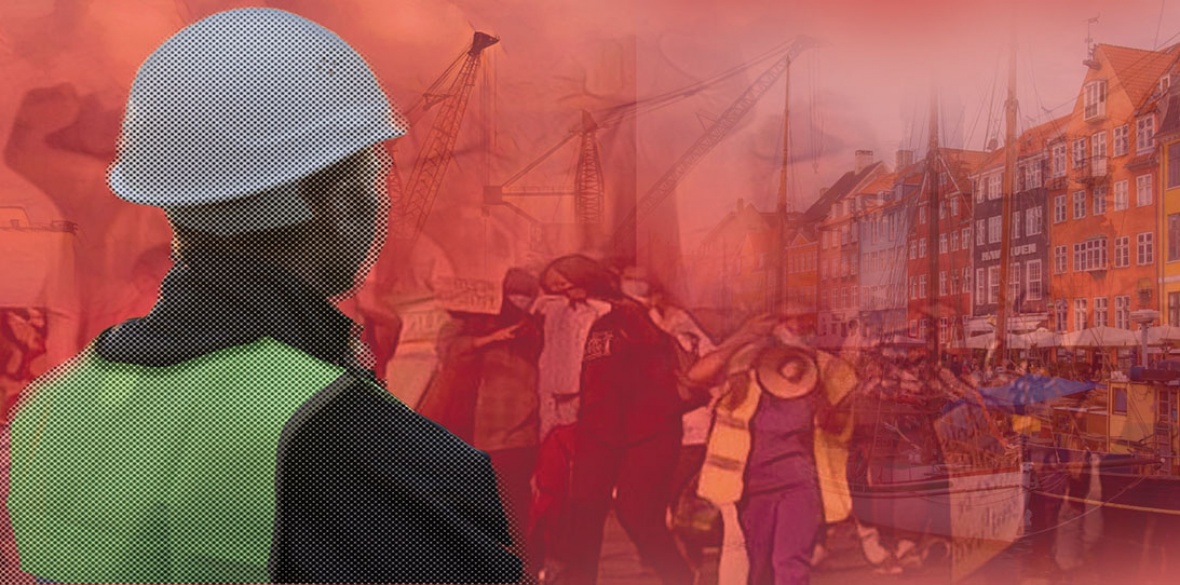This is the last article you can read this month
You can read more article this month
You can read more articles this month
Sorry your limit is up for this month
Reset on:
Please help support the Morning Star by subscribing here
MANY trade unions across Denmark have a great focus on the conditions of migrant workers in the Danish labour market. It has not been an unknown phenomenon that this group often has to work under worse conditions than Danish colleagues.
Often it has not only been about inferior conditions, but downright miserable conditions. It is particularly within the building and construction sector that over time it has been possible to report on deeply objectionable conditions.
The trade unions have shown this for a long time, as they themselves experience it in their daily work and in their movements on construction sites, but now a large-scale report from Aalborg University shows that it is not just plucked out of thin air.
The basis of the report
It is precisely the construction industry that is under scrutiny in a report from Aalborg University that was published earlier this year.
Against the background of an increase in the number of migrant workers in the Danish labour market, a doubling since 2013, as well as the many stories about miserable working conditions, a research team has delved into the matter.
More than 310,000 full-time migrant workers are now part of the Danish labour market. It is therefore no longer a question of a marginal group, but a large proportion of employment.
The report states that the increase in the number of migrant workers is particularly large in the construction industry. Here, in the same period of 10 years, there has been an increase from 8,782 to 25,014 full-time employees.
The majority comes from the newest EU countries, which became part of the EU’s eastern enlargement in 2004. The three largest groups are respectively from Poland, with 11,585 people, Romania with 4,024 people and Lithuania with 2,741 people.
Although the largest part of migrant workers are from EU countries, there is an increase in the number of people coming from so-called third-world countries outside the EU. This group consists of a total of 5,848 people.
Despite this increase in the number of migrant workers, there has not been significantly more research in the area. Six researchers are now making amends for this in this report.
As mentioned before, this is not unknown territory for the trade union movement, but the fact that you now have a thorough research report on the area gives an insight into the mafia methods used by parts of the construction industry, and an insight into the fact that the employers are not driven by charitable ideas, but by ruthless exploitation.
In addition, this report must also be seen as a political and professional tool to strengthen the trade union movement’s fight for orderly conditions and justice on the labour market. The report’s analysis is data-driven and thus based on factual data collected on the subject. It is therefore not an interpretation based on academic theories regarding causation.
Methodologically, the report is based on, among other things, register surveys from the CPR register, interviews with 84 migrant workers from 13 different countries, primarily eastern and southern Europe, interviews with 37 professional informants such as occupational health and safety consultants, representatives from employers and trade union employees.
This article is not intended to explain all aspects of the method, analysis or conclusions, but to give an overall picture of the basis, method and results.
Longer hours and more dangerous work
What is of greatest importance is, of course, what the report has arrived at. It shows that it is not uncommon at all for migrant workers to work more hours than their Danish colleagues, that they have a far worse and more dangerous working environment, which is also shown by an over-representation in work injuries.
There are several examples of reasons for this, but one of the topics the interviewed migrant workers themselves focus on is the high work pace and the employer’s constant pressure on the workers to increase the work pace even higher.
It is interesting that several of the interviewees see a marked difference in the pressure on Danes, who are not put under such pressure and have more breaks. That part of the explanation is also to be found in the uncertainty that migrant workers live under is also repeated.
More often, they are more dependent on the employer who provides accommodation. At the same time, the language barrier is an aspect that means that you do not have the same opportunity to speak up or negotiate about terms and working hours.
A third aspect is that many migrant workers send money home to their families in their home country, which makes the family even more dependent on their relative’s work in Denmark.
The high pace of work, combined with poorer safety advice and equipment, also explains why the number of occupational accidents among migrant workers is higher.
Their work tasks and working environment are simply harder and more dangerous. A high degree of occupational injuries is also not reported, which is why there may actually be hidden figures that show even more unacceptable conditions and accidents.
Better tools for the trade union movement
The fact that the trade union movement and this newspaper’s readers are well aware that the law of the jungle rules in the Danish labour market as well and that all employers are not nice people who intend to do the best for the workers is probably not surprising.
But this report can undeniably make someone’s eyes open to the fact that what it’s all about is conflicting interests. Employers want to make money, lots of money. They do so at the expense of the welfare of the workers.
The fact that many Danish workers, through many years of industrial struggle, have won better conditions means that employers, especially within the construction industry, look for other pastures and use migrant workers.
In principle, they don’t care about skin colour or language, they just want the cheapest and least demanding labour. This is how capitalism is screwed up.
But it is not enough simply to state that capitalism cannot deliver a healthy labour market. Something has to be done here and now.
Therefore, the trade union movement needs better opportunities, in their active fight for better wages and working conditions, also for migrant workers.
Here, it is pointed out, among other things, that the Working Environment Authority must be stronger and trade unions must have better opportunities to investigate the conditions on construction sites.
It is also pointed out that massive pressure must be placed on employers, who must be much more responsible in relation to creating a good working environment.
Martin Minka Jensen is international secretary of the Danish Communist Party.









